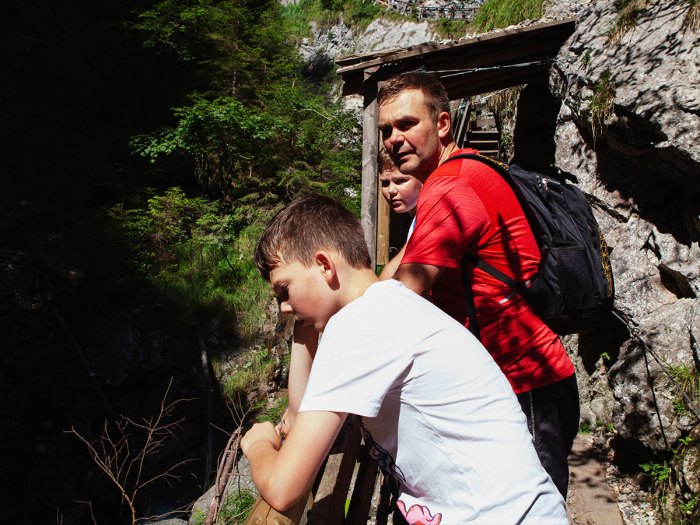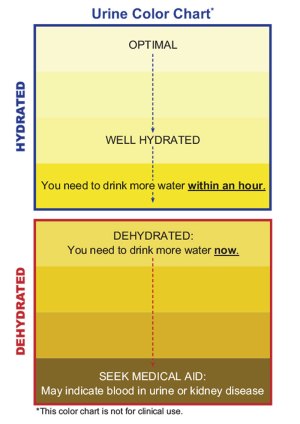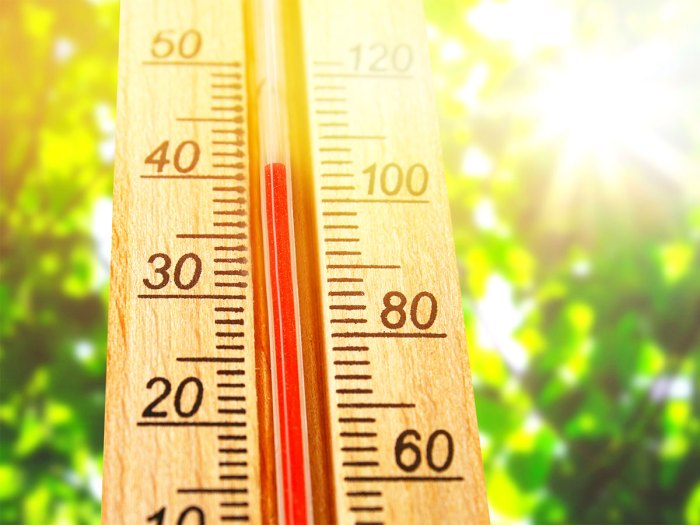How to Avoid Heat Exhaustion and Heat Stroke

John Musgrove was on his first backpacking trip, and he was not a happy hiker.
“I’m tired, and I think I’m going to barf,” he moaned.
The eighth grader and his Scouts BSA patrol were hiking a section of the Appalachian Trial in the Mark Trail Wilderness of north Georgia.
John, 13, was a good student but he didn’t exercise much and wasn’t in very good shape. The summer heat was hammering him. He sat beside the trail, slumped against his pack, pale as a ghost. Sweat poured down his face. His breathing was fast.
Pete Barnes, the Scoutmaster, helped John into a patch of shade. Mr. Barnes wet his bandanna from his water bottle, and draped it over the boy’s head. He told John to drink the rest of the water in small sips.
Over the next hour or so, John drained the bottle. By then, he seemed his same old self. Hiking slower and drinking more water, he was able to finish the trip.
LOSING IT
When your body loses too much water and salt, trouble follows. Heat cramps — muscle cramps caused by water and salt loss — aren’t serious, but they do hurt a lot.
To recover from heat cramps, drink a sports drink or water with a pinch of salt so you replenish electrolytes lost though sweating. Remember that most sports drinks contain a lot of sugar, so drink them in moderation. You can also drink plain water with a salty snack.
If you rest and gently stretch cramped muscles, and massage them a little bit, the pain goes away faster.
A BODY OF WATER
 You may look and feel pretty solid, but more than half of you is water — and you need it all. On a normal day you may lose a gallon or more when you sweat, urinate or defecate and every time you breathe.
You may look and feel pretty solid, but more than half of you is water — and you need it all. On a normal day you may lose a gallon or more when you sweat, urinate or defecate and every time you breathe.
Usually you gain back the lost fluid by drinking and eating. But when you lose too much water, as John Musgrove did — a problem called dehydration — your health and maybe even your life are threatened.
Always drink before you’re thirsty. If your urine isn’t clear, you’re not drinking enough. Remember this saying: “If your urine is dark, you have missed the mark.”
SWEAT IT
Sweat is mostly water, with some sodium chloride, also known as salt, and some other things in it. When sweat evaporates from your skin on hot days, that cools you inside. If you’ve lost too much water, you can begin to get sick from heat exhaustion. Symptoms include headache, nausea, light-headedness, and extreme fatigue. You skin make look pale and feel clammy or sweaty.
This is a serious health problem. You can beat heat exhaustion by resting in a shady area, removing excess clothing, cooling off the skin and drinking water the way John Musgrove did. It’s a good idea to drink at least a quart of water, slowly, and to add just a pinch of salt to it. You can also nibble a few salty snacks while drinking. Remember: Sip slowly so your body absorbs as much of the water and salt as possible.
TOO HOT, TOO DRY
If you get too hot, your skin becomes red and hot and you heat up inside. Your brain, which is very sensitive to rising temperatures, begins to cook. A hot brain can make you crazy, feel lost and want to argue or pick a fight. Heat stroke has struck. You have only minutes to act!
A person with heat stroke should be cooled down as quickly as possible. Soak their skin with water and fan them to speed the cooling effect of evaporation. If water is short, focus on cooling the head. This is a medical emergency! This person must be cooled immediately and evacuated.

BE COOL
You can prevent heat problems, using these tips:
- Avoid hard exercise during the hottest part of the day.
- If you’re not in shape, slow down and let your body adjust.
- Make sure you acclimate to the environment and get in shape before the event.
- Dress in layers and wear clothing that breathes and wicks moisture away from you.
- Eat snacks that contain a little salt.
- Drink water and keep drinking it.
Learn more about hydration and heat safety and read the BSA’s guidance for preparing for high adventure activities.
